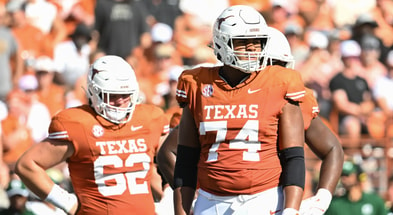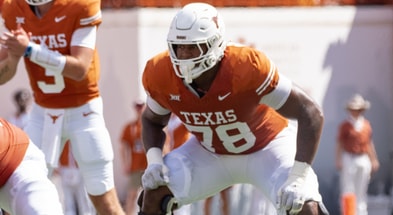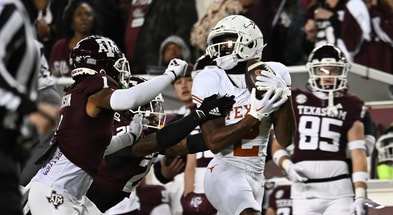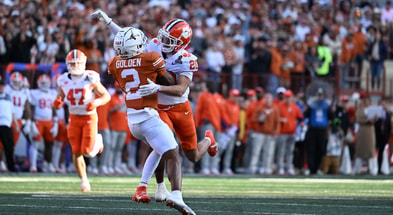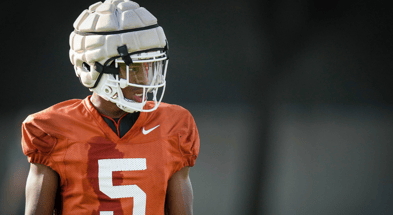Why spring practices against other teams is an intriguing idea, even for the Texas Longhorns

College football could be on the verge of something different — and maybe better — this spring.
[Join Inside Texas TODAY and get FOUR MONTHS for just ONE DOLLAR!]
Colorado and Syracuse have already filed paperwork with the NCAA, aiming to scrimmage each other during their spring game. Shortly after, Oklahoma State head coach Mike Gundy floated the idea of a “Bedlam spring scrimmage” versus Oklahoma — not just to keep the rivalry going, but as a way to develop players and boost NIL opportunities.
Was it a jab? Maybe. But behind the quote is a concept more programs — including Texas — should be thinking about if it can be done.
Yes, spring ball is a time to work on yourself. It’s about learning the system, repping fundamentals, building depth, and developing your roster. But here’s the thing — you can still do all of that while lining up against a new opponent. Period.
Could Spring Scrimmages Work?
Absolutely. Spring scrimmages don’t have to be live, full-on games. You can make it situational.
Put your teams in scenarios like red zone, blitz pickup, inside run, 7-on-7, opening script periods — even mix in special teams work. Of course, quarterbacks will stay untouchable during every single period. You don’t need to go full contact all day, but you can make certain situations live and full speed.
That’s where you really learn:
- Can your offensive line move people in the run game?
- Can your defensive line defeat blocks and reset the line of scrimmage?
- Can you finish drives in the red zone?
- Do your players know who to pick up on special teams when it’s fast and chaotic?
You get a baseline when you line up against your own team every single day. By practice five, most guys already know the script. They know where the ball is going. It becomes an open book test. Facing someone else? That’s a completely different challenge. It gives coaches a clearer, more honest look at what their team may actually look like going into the fall.
Could Texas Benefit from This?
Texas could keep it local and manageable.
They could scrimmage teams like Texas State, Baylor, or TCU. Keep it on the I-35 corridor — that way travel is minimal, cost stays low, fan interest remains high, and you could even rotate it into a home-and-home series every spring.
It would generate ticket revenue.
It would give fans a fun, offseason fix.
And it could help raise NIL fundraising for some teams.
Right now, Texas has a lot of questions they’re trying to answer this spring.
They’re looking to see what they have in young receivers like Parker Livingstone, Daylan McCutcheon, Jaime Ffrench, and Kaliq Lockett. They want to evaluate the tight end room with Jordan Washington, Spencer Shannon and Emaree Winston. Who steps up at right tackle? What do the young defensive linemen look like?
That includes elite freshman Justus Terry and key portal additions like Cole Brevard, Hero Kanu, and Travis Shaw. Some of those questions will start to get answered in spring ball. But seeing those guys line up and compete against someone they don’t know — that could give even more clarity.
Top 10
- 1New
Donald Trump blasts NFL
Teams for not drafting Sheduer Sanders
- 2
Kim Mulkey
Takes victory lap on South Carolina
- 3Hot
2nd Round NFL Mock Draft
QBs under microscope
- 4
Shedeur Sanders reacts
To going undrafted in 1st round
- 5
Marcus Spears fires back
At Stephen A. Smith over Shedeur take
Get the On3 Top 10 to your inbox every morning
By clicking "Subscribe to Newsletter", I agree to On3's Privacy Notice, Terms, and use of my personal information described therein.
The Competitive Edge
Practicing against your own team every day gets repetitive. Players know the tendencies. They know the formations. They know the calls. It becomes routine. And when things get routine, players can coast.
But when you throw a different opponent into the mix, that changes the mindset. That makes players lock in. It pushes guys to compete at a different level, because now they’re being tested in real time against someone who’s not just running the same drills they’ve seen for three straight weeks.
That breeds real competition. And that’s when coaches find out who’s ready. In college, baseball allows teams to scrimmage outside competition in the fall. Real pro football, the NFL, does it during training camp, too.
The Portal Angle
Let’s be real — this is also a chance to evaluate players on the other sideline.
It’s not tampering, but it is exposure. You see who stands out. You see who might be underutilized. You see who fits your scheme. And if a player enters the portal after spring, you’ve already got film on him — not from Hudl, not from two years ago, but from a live setting.
That’s just part of today’s game.
Final Thoughts
Spring scrimmages won’t replace internal development — but they can absolutely enhance it.
You still work on yourself. You still focus on installs and fundamentals. But you’re doing it in a more competitive, realistic environment that brings the best out of your players and gives your coaches a more complete picture.
Should Texas think about it?
Absolutely.
[Order THE LONGHORN ALPHABET today and teach your little ones the A to Z’s of Texas Football!]
They’ve got young talent to evaluate, position battles to sort out, and a fan base that would show up and watch it happen. You don’t really know what you have until you line up against someone who doesn’t know your playbook. And spring just might be the perfect time to find out.




